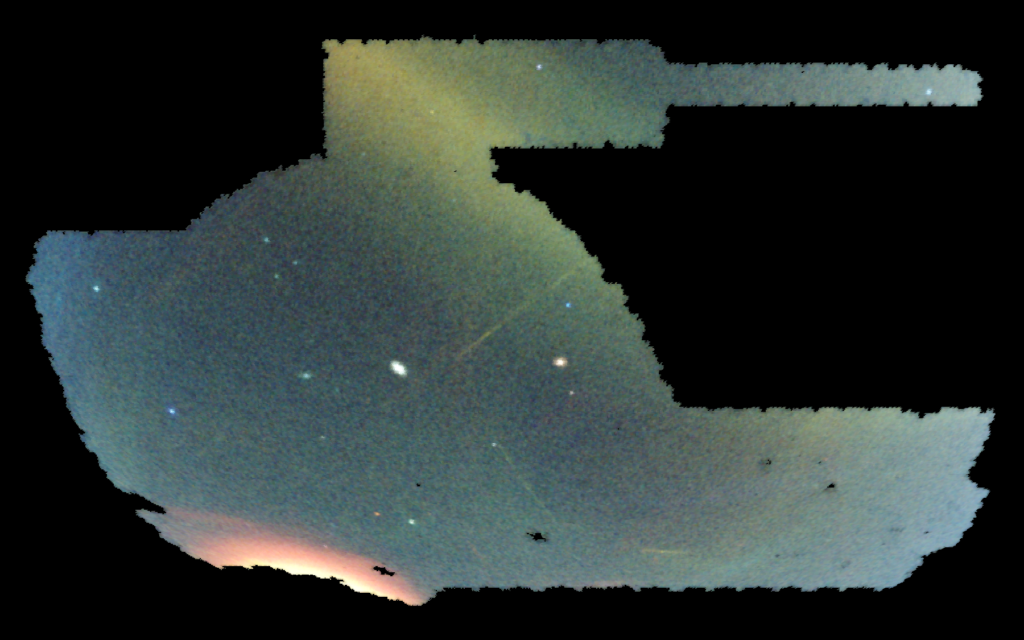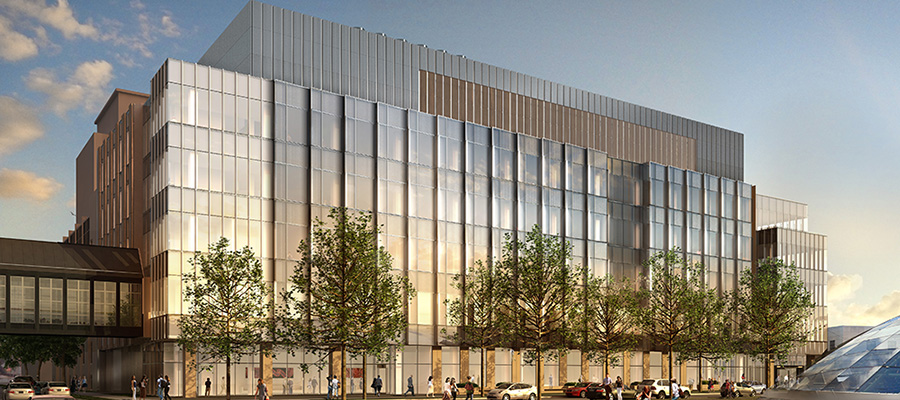Stars in our Milky Way and galaxies in our Local Group contain the fossils and clues on stellar evolution and supernovae, the formation and evolution of star clusters and dwarf galaxies, and the formation of large spiral galaxies. Rapid progress in this field -- usually called Galactic Archeology -- was enabled by large-area imaging and spectroscopic surveys of old stellar components of the Milky Way and dwarf galaxies, together with simulations of chemical and dynamical evolution. The field of Near-Field Cosmology extends the scope of these studies to probe the formation and evolution of galaxies and the nature of dark matter.
The Dark Energy Survey (DES) is releasing its DR1, with catalogs and images from the first three years of DES operations early in 2018, including 400M objects (100M stellar sources in grizY band to r of 24th magnitude at 10 sigma) over 5000 square degrees mostly in the Southern Galactic cap. This survey is about 2 magnitudes fainter than SDSS at the same S/N. In addition to DES, many other DECam community surveys, such as DECaLS, DECaPS, SMASH, MagLiteS, BLISS, etc, have already had or will soon have the public data release.
Kavli Institute for Cosmological Physics (KICP) at the University of Chicago will host a 3-day workshop on June 27-29 to explore uses of the DES DR1 for near field cosmology studies in conjunction with other DECam public data. Furthermore, the workshop will explore possible synergies with other spectroscopic surveys as well as Gaia DR2.
The Dark Energy Survey (DES) is releasing its DR1, with catalogs and images from the first three years of DES operations early in 2018, including 400M objects (100M stellar sources in grizY band to r of 24th magnitude at 10 sigma) over 5000 square degrees mostly in the Southern Galactic cap. This survey is about 2 magnitudes fainter than SDSS at the same S/N. In addition to DES, many other DECam community surveys, such as DECaLS, DECaPS, SMASH, MagLiteS, BLISS, etc, have already had or will soon have the public data release.
Kavli Institute for Cosmological Physics (KICP) at the University of Chicago will host a 3-day workshop on June 27-29 to explore uses of the DES DR1 for near field cosmology studies in conjunction with other DECam public data. Furthermore, the workshop will explore possible synergies with other spectroscopic surveys as well as Gaia DR2.
The 3-day workshop will include presentations and discussion on the first two days and a hack day on the last day. Talks on ideas or science results related to DES/DECam data, or synergies with other programs are encouraged.
Topics in this workshop includes:
Updates: The goal of this workshop is to help the community to jump-start the DES/DEcam data and stimulate projects on near-field cosmology with these valuable datasets/images. Participants are not required to have experience or knowledge with the DES/DECam data. Tutorials and Q&A sessions on data/image access and analysis will be given on the morning of the hack day.
Topics in this workshop includes:
- Dark Matter and Near-Field Cosmology
- Milky Way satellite galaxies - satellites of satellites, planes of satellites, dark matter particle physics
- Stellar streams and halo overdensities -- constraints on Milky Way dark matter halo
- First stars; Reionization; Chemical Evolution -- r-process variation
- Time series photometry and RR Lyrae stars -- distant structure tracers
- Local Group and Nearby Galaxies -- Ultra-Diffuse Galaxies
- Synergy with Gaia DR2 and other spectroscopic programs/surveys.
- Synergy with other DECam surveys and/or other imaging surveys.
Updates: The goal of this workshop is to help the community to jump-start the DES/DEcam data and stimulate projects on near-field cosmology with these valuable datasets/images. Participants are not required to have experience or knowledge with the DES/DECam data. Tutorials and Q&A sessions on data/image access and analysis will be given on the morning of the hack day.
Organizing Committee
| Ting Li (Chair) Fermilab/KICP | Jo Bovy University of Toronto | Jeffrey Carlin LSST |
| Alex Drlica-Wagner Fermilab/KICP | Kathryn Johnston Columbia University | Andrey Kravtsov UChicago/KICP |
| Jennifer Marshall Texas A&M University | Heidi Newberg Rensselaer Polytechnic Institute | David Sand University of Arizona |
| Brian Yanny Fermilab |
Location
Room 401, William Eckhart Research Center (ERC),
Kavli Institute for Cosmological Physics,
5640 South Ellis Avenue,
Chicago, IL
Kavli Institute for Cosmological Physics,
5640 South Ellis Avenue,
Chicago, IL





